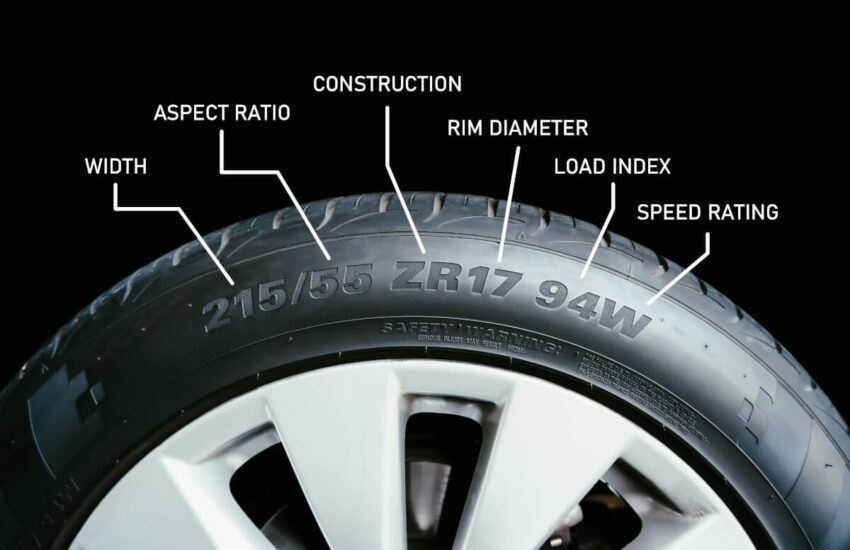For most drivers, the numbers and letters emblazoned on the sidewall of their vehicle’s tires might as well be hieroglyphics. Beyond the brand and model, this alphanumeric code holds critical information about the tire’s specifications, capabilities, and safety. Understanding these markings can help you make better decisions about tire purchases, maintenance, and safety. Let’s break down what these tire markings on sidewall mean and how you can use this knowledge to your advantage.
Tire Size
One of the first pieces of information you’ll encounter on a tire sidewall is its size. This is usually presented in a format like “P215/65R15 95H”. Breaking this down:
- P: This stands for Passenger vehicle. You might also see “LT” for Light Truck, indicating the tire is designed for vehicles that carry heavy loads or perform off-road work.
- 215: This number represents the width of the tire from one sidewall to the other in millimeters.
- 65: This is the aspect ratio. It’s a percentage that describes the height of the tire’s sidewall compared to its width. In this case, the height of the tire is 65% of its width.
- R: This indicates the tire’s construction type. “R” stands for Radial, which is the most common type of tire construction. Other types you might encounter are “B” for Bias belt or “D” for Diagonal.
- 15: This number tells you the diameter of the wheel in inches that the tire is intended to fit.
- 95H: This is the service description. The number (95) is the load index, indicating the maximum weight the tire can support when fully inflated. The letter (H) is the speed rating, which indicates the maximum speed at which the tire can safely operate when properly inflated and under load.
Speed Rating
The speed rating is a critical factor for safety, especially if you frequently drive at high speeds. It’s denoted by a letter, such as “H” in our example, which corresponds to a maximum speed. For instance, “H” signifies that the tire can safely handle speeds up to 130 mph. Speed ratings range from “A” (the lowest) to “Y” (the highest), with each letter representing a specific top speed threshold.
UTQG Ratings
The Uniform Tire Quality Grading (UTQG) system provides information on a tire’s treadwear, traction, and temperature capabilities. This rating system, established by the National Highway Traffic Safety Administration (NHTSA), offers a standardized way of comparing tires.
- Treadwear: This number indicates the tire’s expected lifespan relative to a control tire. For example, a treadwear rating of 200 means the tire should last twice as long as the control tire. Higher numbers suggest a longer-lasting tire, but actual wear can vary based on driving habits, conditions, and maintenance.
- Traction: Traction ratings are graded from highest to lowest as AA, A, B, and C. This rating measures a tire’s ability to stop on wet pavement as tested under controlled conditions. A higher rating means shorter stopping distances.
- Temperature: Temperature grades, from highest to lowest (A, B, C), indicate the tire’s resistance to high heat climates at high speeds. A higher grade means the tire can dissipate heat more effectively, reducing the risk of tire failure.
Other Markings
Beyond size, speed rating, and UTQG, you may find several other markings on your tire’s sidewall:
- M+S or M/S: Indicates Mud and Snow, meaning the tire meets the Rubber Manufacturers Association’s standards for use in light snow.
- DOT: The Department of Transportation code provides information about the tire’s place of manufacture, size, manufacturer’s code, and the week and year the tire was manufactured.
- Max Load/Max Pressure: This indicates the maximum load the tire can carry and the maximum air pressure it can hold.
Wrapping It Up
Understanding the information on your tire’s sidewall can help you choose good car tires for your vehicle, driving habits, and conditions. It can also aid in tire maintenance, ensuring you’re aware of when tires are due for rotation, balancing, or replacement. While it may seem like a small detail, knowing how to read your tire’s sidewall can significantly impact your vehicle’s performance, safety, and longevity. Next time you’re inspecting your tires, take a moment to decipher the code. It’s a simple step that can offer peace of mind and enhance your driving experience.
AutoByPayment.com offers accurate estimates of new and used car loan payments based on self-selected credit score, current rebates, down payment, and trade equity or negative equity, without customers having to provide their personal identifying information such as email and phone.
